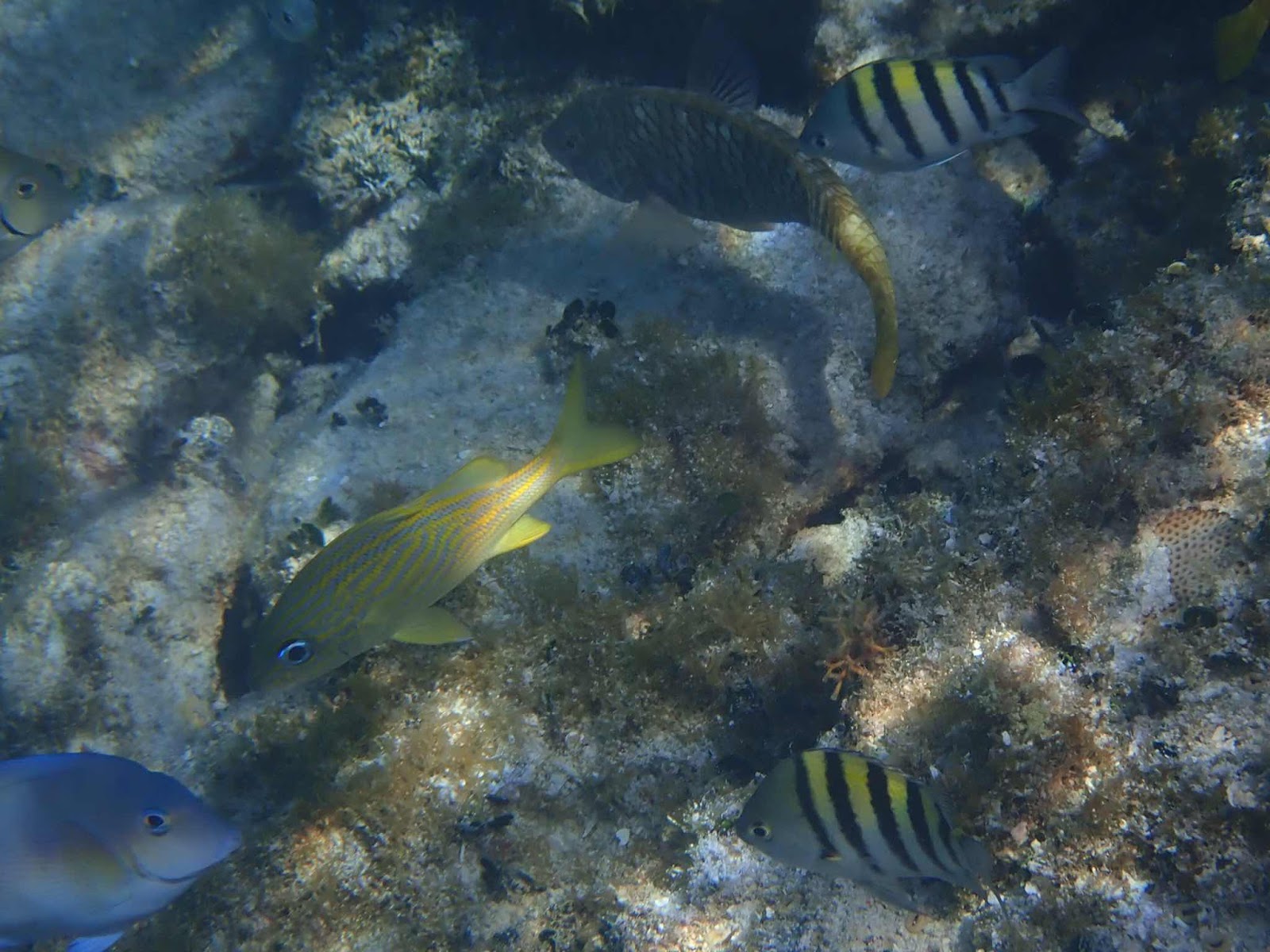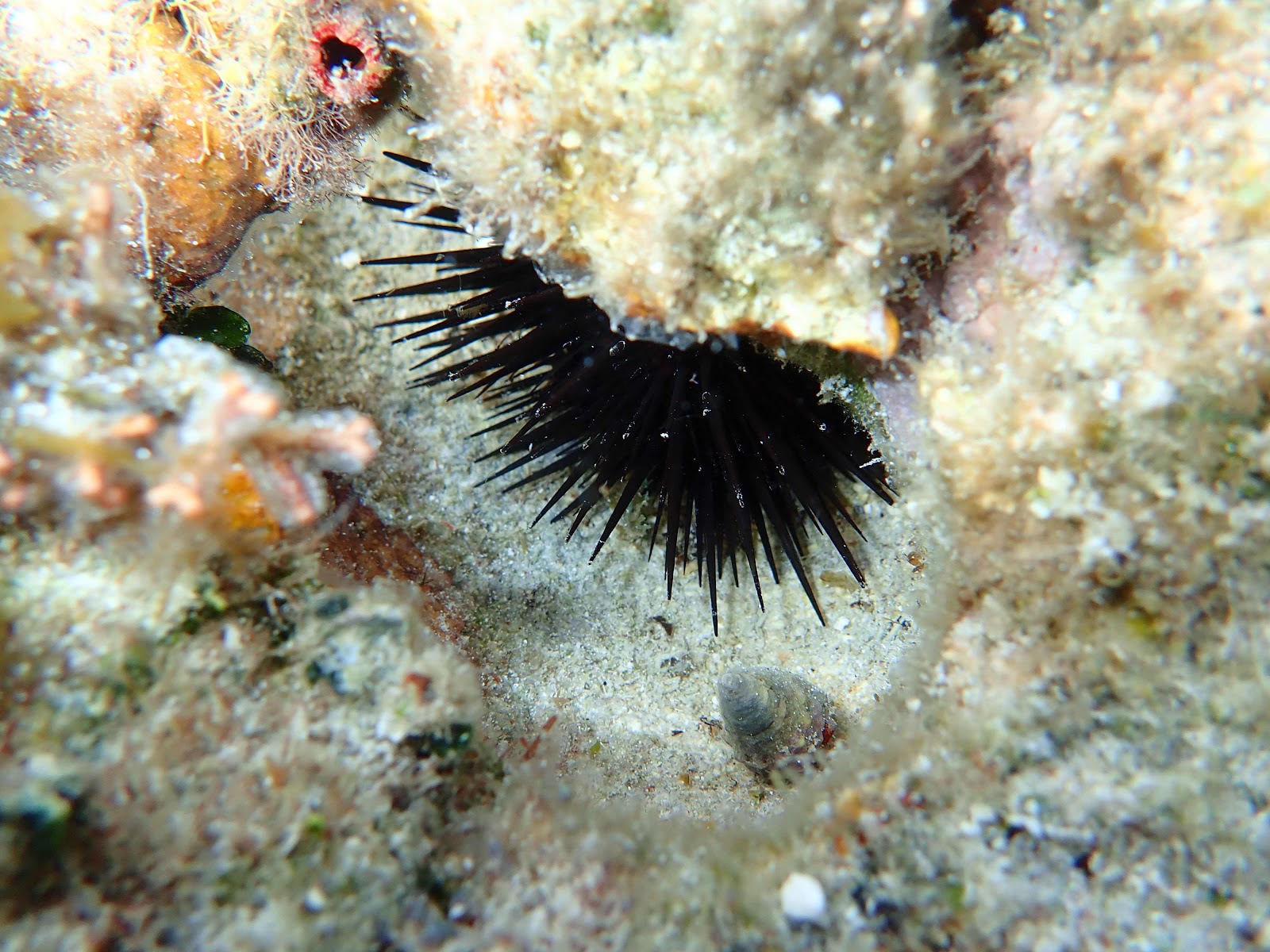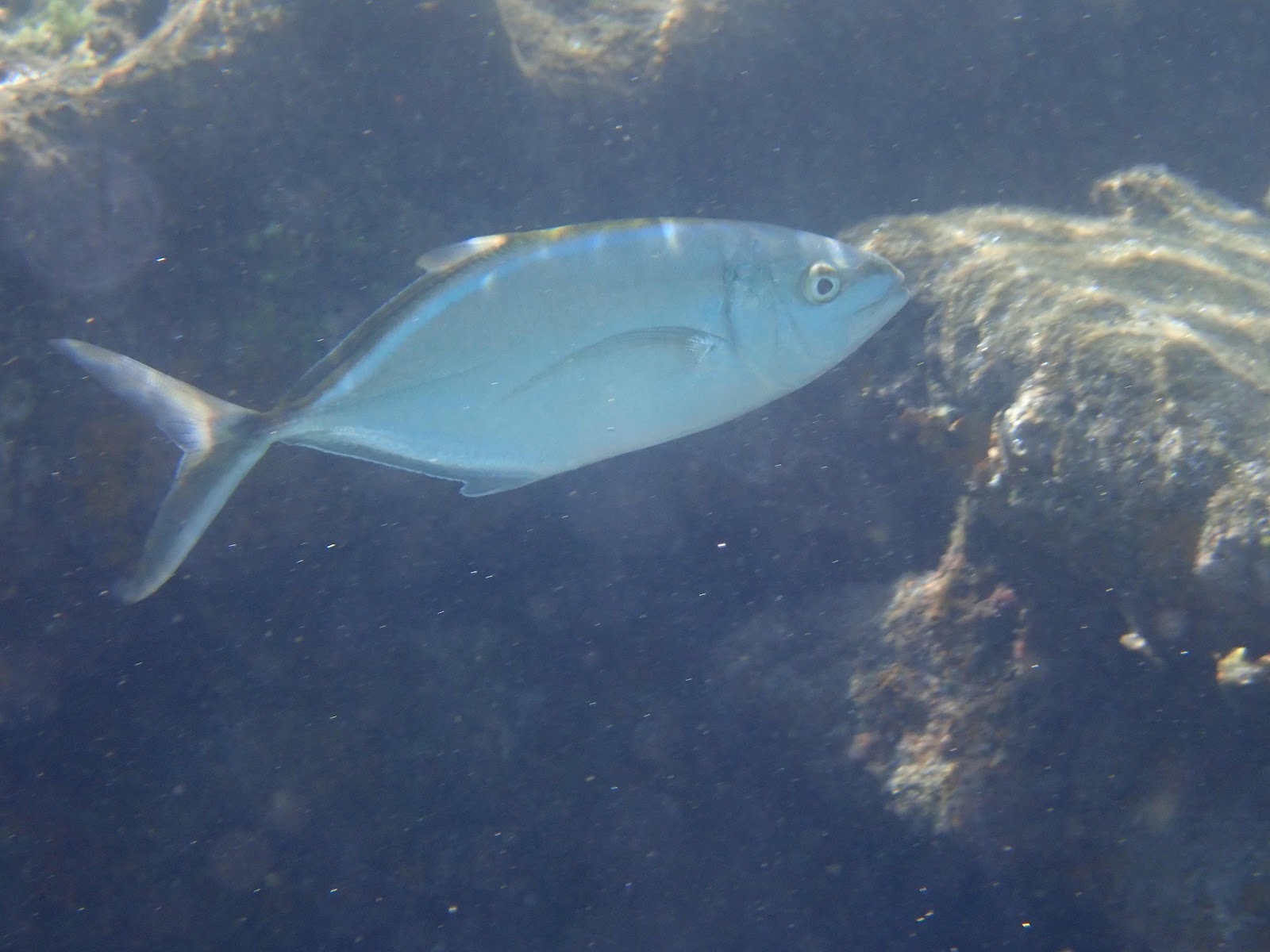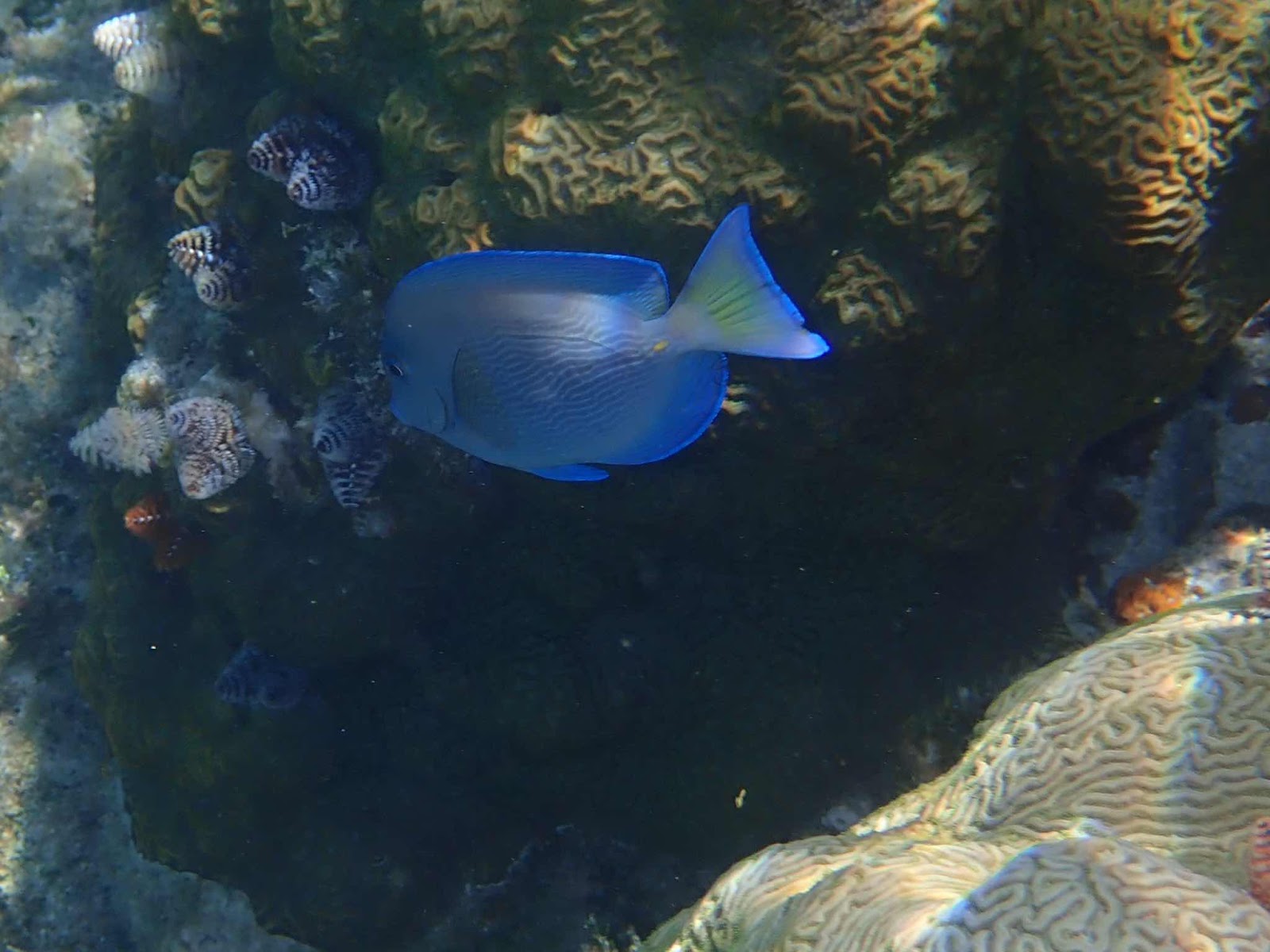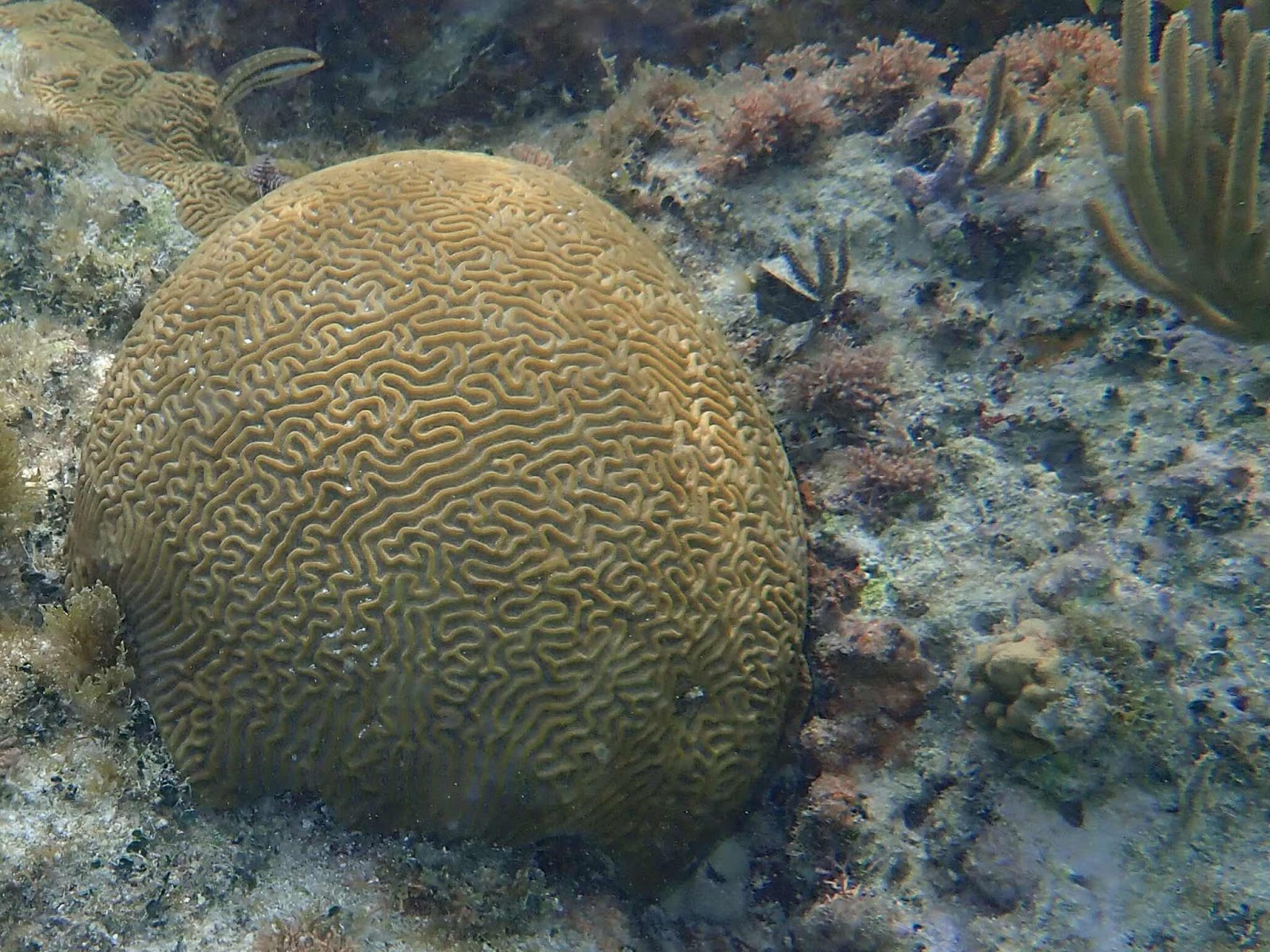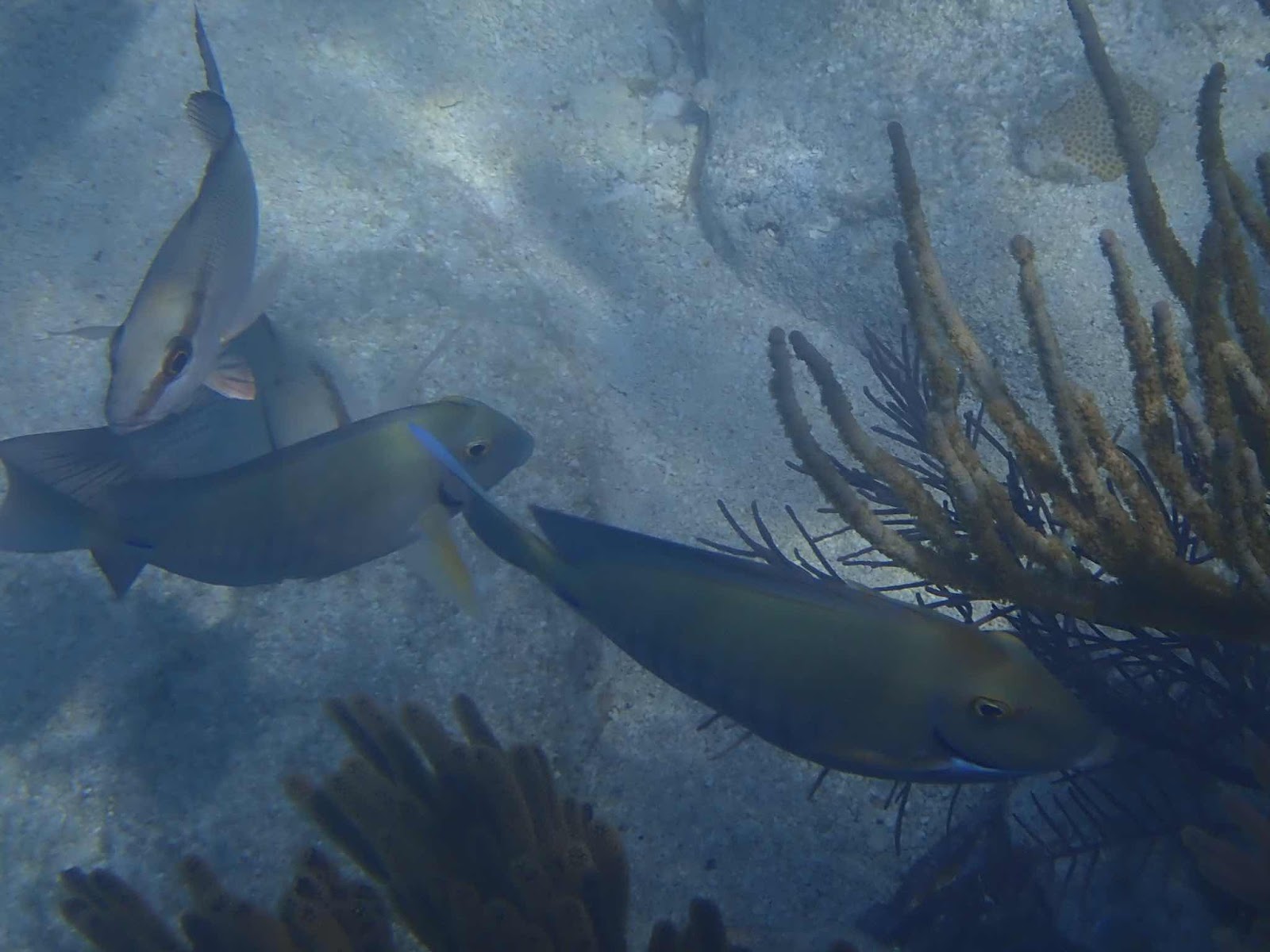We have been anchored in Key West for a week. We purchased a one week dinghy dock pass for $30.00 and one week bus passes for $12.00 total (the cost was $8.00, but one of us got the senior discount😉). We have had a great time exploring this town. I would describe the locals we have met as ‘characters’. On our first bus trip we met an older lady named Beverly. She had tattoos on her face, a nose ring (like a bull), and a true love for Key West! She was excited to tell us about her family and her history, but was equally excited to tell us about the wonderful people of Key West. She insisted that if I left my backpack on the side of the street I could return hours later to find it untouched. She was confident that EVERYONE in Key West embraced the ‘One Human Family’ philosophy. She was adorable, and I loved her optimism!!

We made it to mile marker ‘0’...check out the cool tree behind Keith’s left shoulder!

We did see several examples to support Beverly’s claims. Well look at that, the sticker says it is the ‘official’ philosophy of Key West. Nice!

We have discovered a new understanding of ‘free range’ chickens. Chickens and roosters are everywhere, and they are free to do as they please!
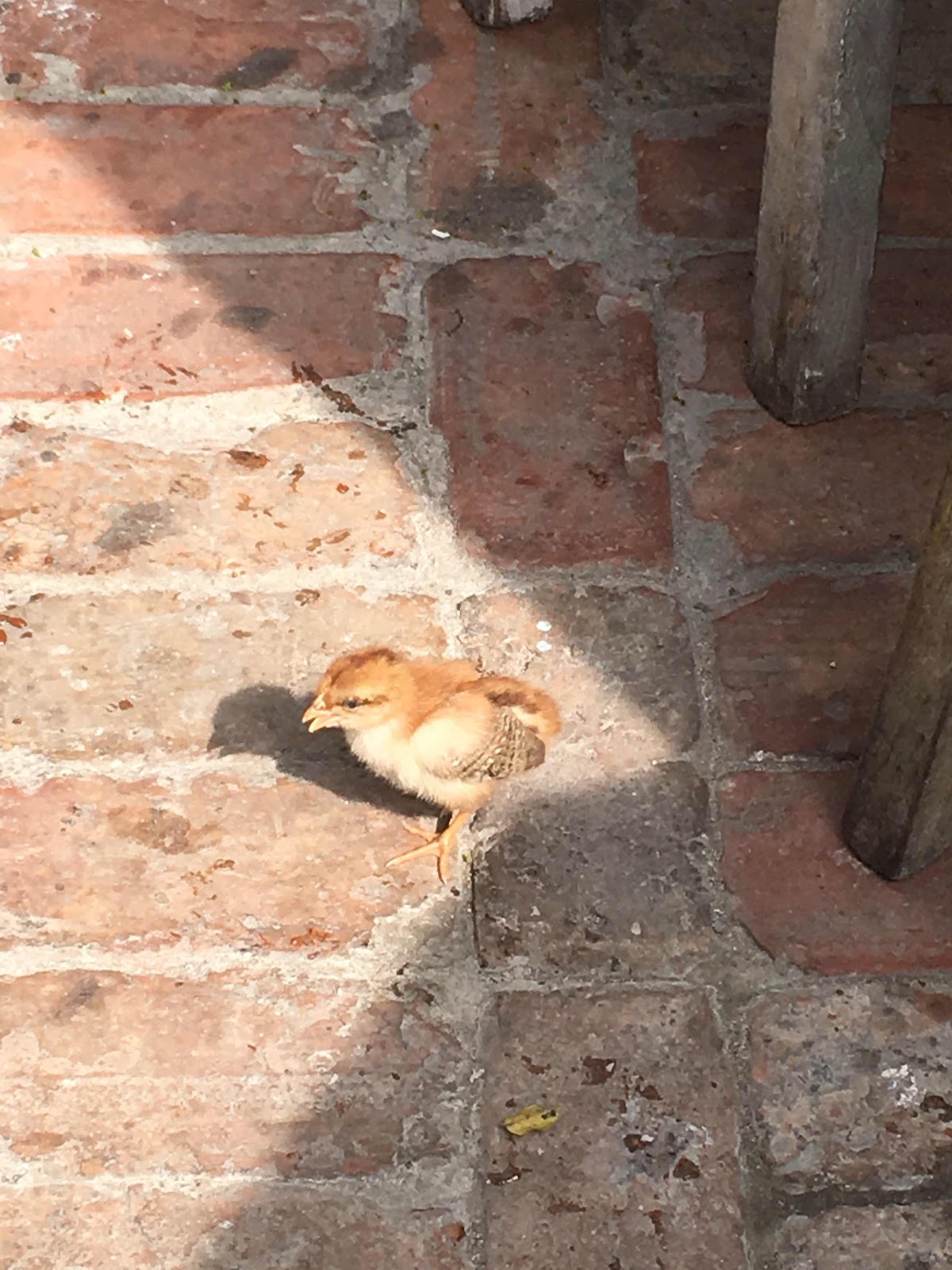
And the population is growing.
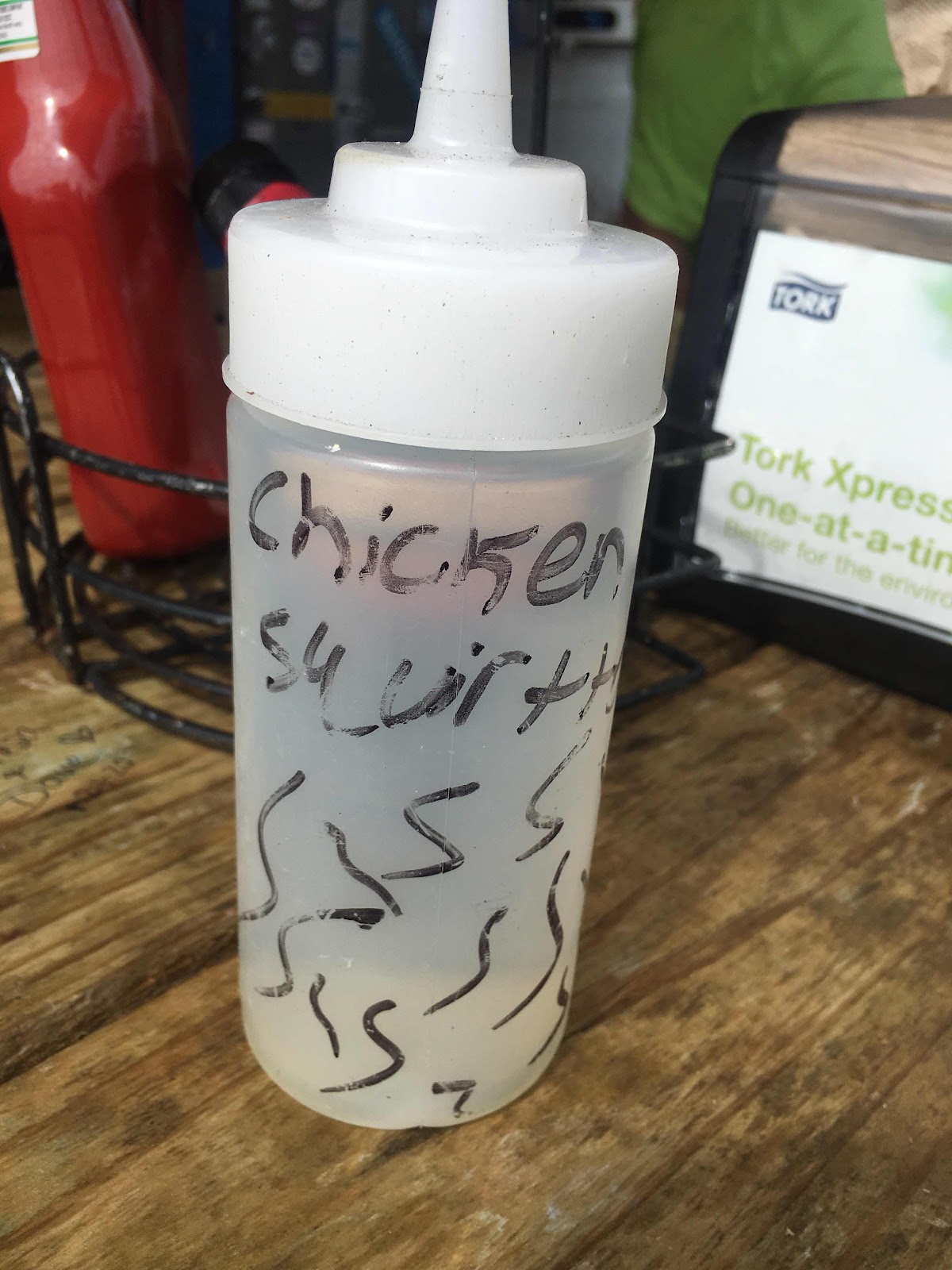
Outdoor restaurants provide water filled bottles in case the chickens become a nuisance. However, we never witnessed any aggressive behavior from the chickens.
It was very windy during our first few days in Key West so we visited town and completed some boat projects, but didn’t have an opportunity to swim, snorkel, or explore in the Whaler. Finally on Wednesday, the winds died down and the forecast called for a beautiful sunny day. We packed a lunch and jumped in the Whaler to explore some of the local mangrove islands. I’m not sure what this is/was, but they were plentiful and large. Most measured 12-18 inches across the top.
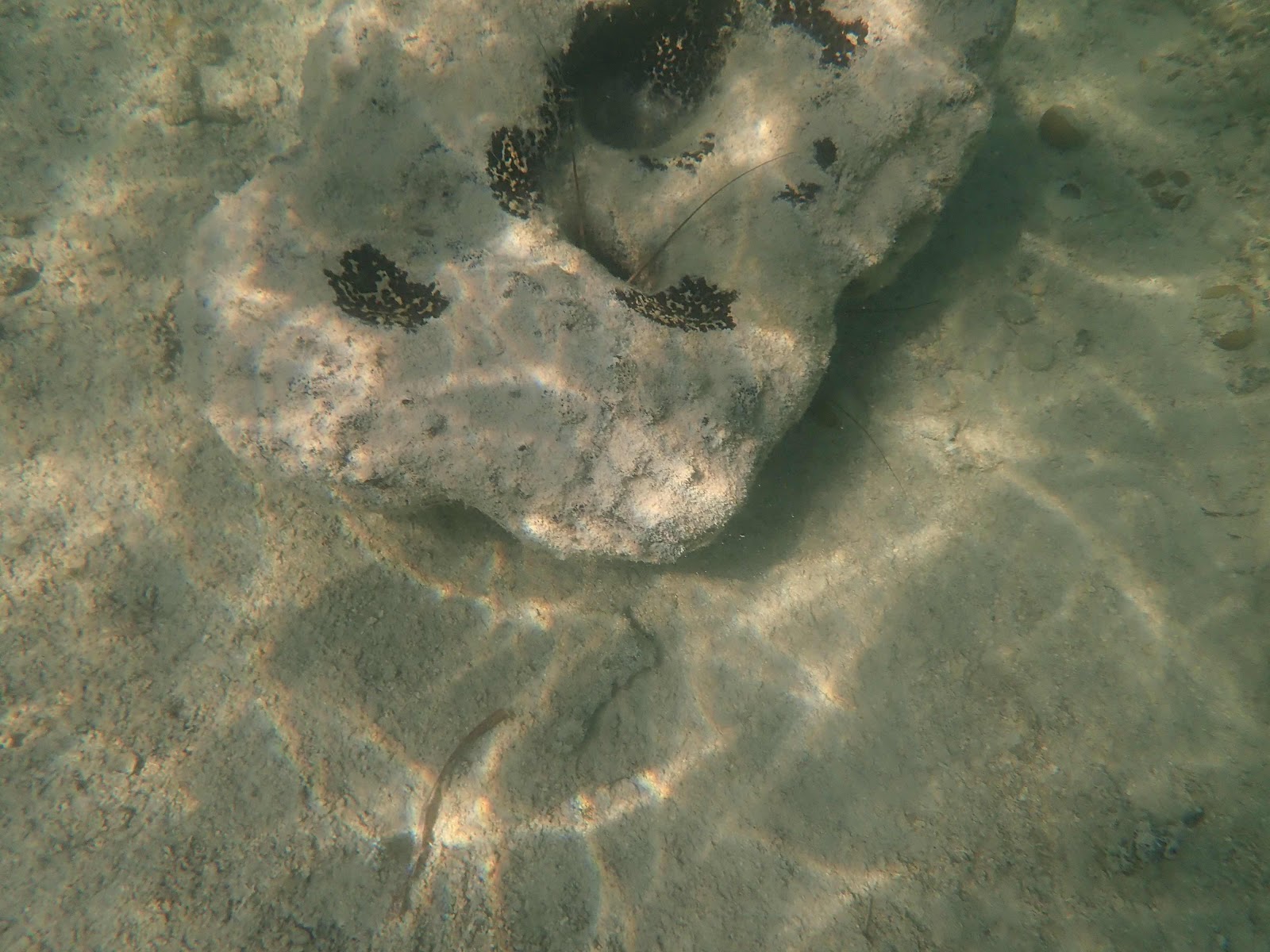
There were also numerous chunks of something (rock, coral, cement). Can you see what is hiding in (and under) this one? Answer...two lobsters!
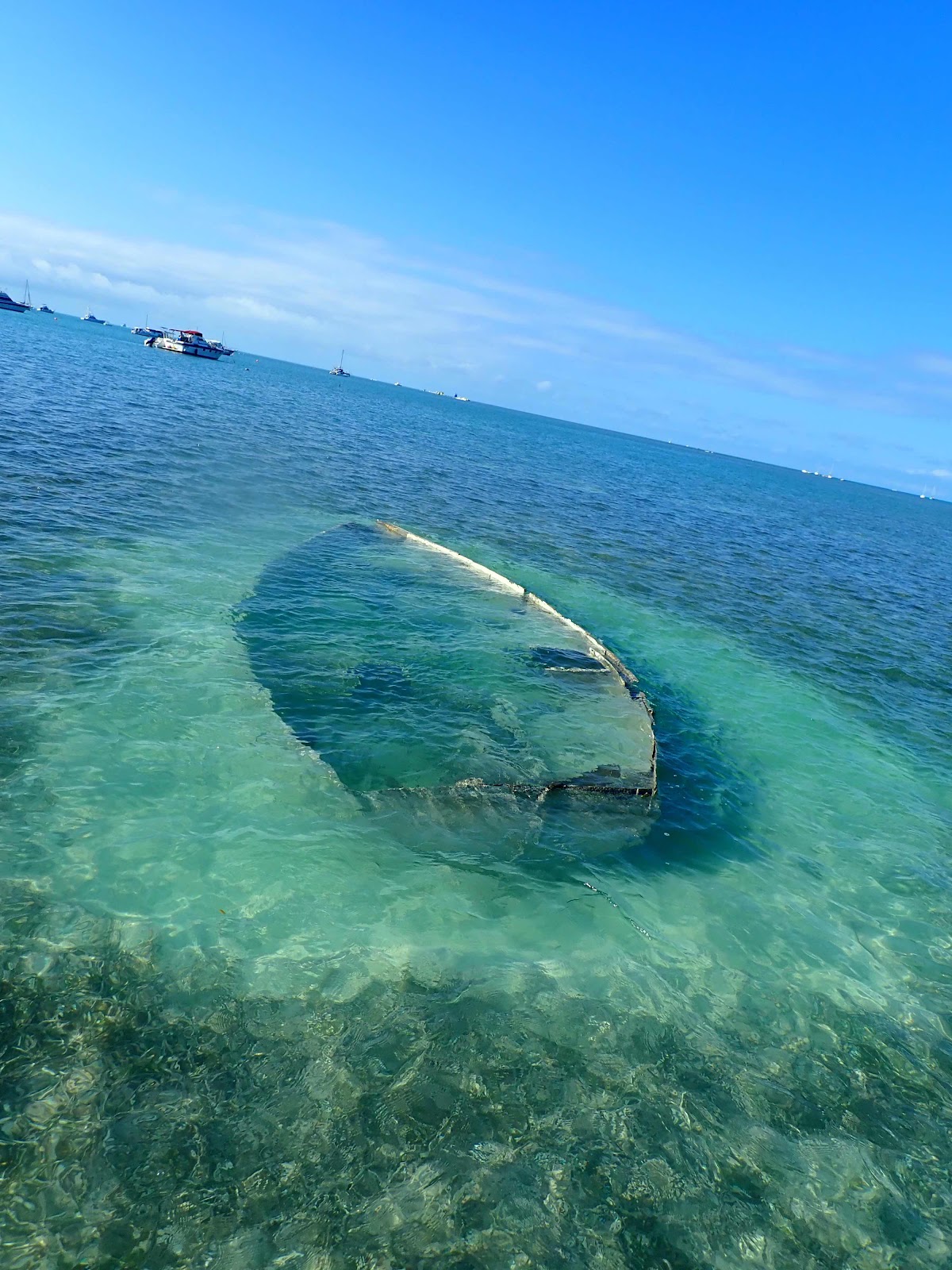
There are many sunken boats in the anchorage area. Some in very shallow water.

So...as I’ve explained previously, cruising has been described as 99% glorious and 1% terrifying. We got a little of the 1% on Friday night. We have been through many storms with usually no story to tell, but this time things happened differently than we expected. That is probably part of the problem, we were a little complacent and let our guard down. We had been anchored in this particular spot for 5 days, and had experienced strong northerly winds (25-30 mph) for several of those days. We were confident our anchor was set, and would hold us through anything. We were in 10 feet of water with 100 feet of anchor chain out. Usually, a 10:1 scope is more than enough. When a man stopped by in his dinghy to ask me how our anchor was holding I was perplexed, because we had experienced perfect holding. He told me that he has always had problems in this area. I did not interpret that conversation as a warning, but I should have.
We watched the storm approach, both in the sky and on the app. The storm front reached us at 10:15 pm. I love to watch storms, so I went out back to the cockpit. The front hit with a 50 mph wind out of the southwest. Immediately our anchor alarm sounded. The alarm has sounded in the past, but in the previous 7 months of anchoring, almost every night, we have never had the anchor drag! Usually, the alarm sounds because we have ‘misidentified’ the exact location of the anchor. If we expand the alarm circle by 20 feet it goes off and never comes on again. Not this time! The alarm went off a second time, and from my perspective in the cockpit, we were definitely getting closer to the mooring field...yikes. I yelled to Keith, “start the engines, we are dragging” he jumped from his recliner and started the engines. I moved to the helm while he grabbed a jacket to head to the bow.
It was pitch dark with no visibility in driving rain and 50 mph wind. My job was to make sure the boat didn’t touch anything. Keith’s job was to attempt to get the anchor up. Just as I made some headway away from the mooring field I saw a big sailboat coming toward us. It was also dragging anchor, but there were no signs of life on the deck. We knew people were on the boat, but they were not aware of the situation. I quickly gave 7 blasts on the ship’s horn (the signal for emergency) and people scrambled onto the deck. I had already steered behind them, but they were heading directly for another sailboat who had been anchored very close to our location. I wrestled at the helm while Keith wrestled with the anchor. Finally, we got clear of all boats and retrieved our anchor. Keith had to clear a huge chunk of grass embedded mud from the anchor before we could attempt to reset.
Out of immediate danger, we took a few minutes to regroup. Keith was soaked through and cold. He needed a few minutes in the pilot house while we discussed our plan. We agreed to move south away from the other anchored boats and attempted to anchor again using 200 feet of chain this time. Within 15 minutes our anchor was dragging. Again, battling the wind, rain, waves, and anchor chain we fought to retrieve the anchor. This time we decided to wait for the front to pass before attempting to anchor again. The wind calmed down, and the anchor looked like it was holding so at 1:00 I went to bed. Keith stayed up until 2:30 to make absolute certain. Thankfully, we were in the same location the next morning, but not for long! The strong winds predicted for Saturday started blowing around 11:00...and guess what happened...anchor alarm!
Unbelievable! Our anchor is dragging for the third time in 12 hours (for the third time in 7 months). Battle stations...I’m at the helm, Keith on the bow. He is now complaining that we are supposed to switch anchor duty every other time...but he knows he is better suited to wrestle with the anchor in these conditions.

Keith suggests it might be time to change anchors...I agree! We are preparing to deploy ‘BIG MAMA’. I head the boat out of the harbor to find deeper water, while Keith assembles our secret weapon! We moved outside the harbor, well past the mooring field and lowered the anchor. Winds were blowing steady at 25 with gusts to 35. Before Keith finished on the bow I walked out to inform him that I was pretty sure our anchor was dragging...WTH...what the heck! Once again we retrieve the anchor (with 200 ft of chain) and find it is fouled with a huge block of earthen grass. The grass here is so thick the anchor can’t cut through to get a nice deep purchase. Keith comes into the pilot house and asks what I want to do now (we are both exhausted and tired of playing this game) I suggest we search for the deepest place around, hoping we can find a spot too deep for grass to grow. We are no longer looking for protection from the wind, just a place our anchor will hold.

Green is my new favorite color! This might possibly be the deepest spot in all of the Florida Keys, but it worked perfectly! This picture was taken 6 hours after anchoring, and it has now been 24 hours with no dragging. Winds have been 25-30 all day so I think we found the trick. We slept soundly last night with two anchor alarms set.
This past week did provide time to complete several boat projects. Our life raft is mounted...

And the 12v reverse osmosis water maker has been installed. This is the most amazing invention EVER! Now we have true freedom! Our first test started at noon. The batteries were charged to 90% and the solar panels were bringing in 60 amps. We ran the water maker until 3:00, which produced 35 gallons of water while still charging batteries to 95%. It is a wonderful feeling to have the ability to make water essentially using solar power that would be ‘wasted’ since we don’t have the capacity to store that much power. Now we are ready to head offshore.

We are leaving Key West on Monday to visit the Dry Tortugas Islands. These islands are located approximately 65 miles west of Key West. We will be out of cell range during our time there so I will not be able to post again until we return. However, you will be able to see our current location at all times by clicking on the map link on the right side of the main blog page at MVRightHand.blogspot.com If you are using your cell phone, you might have to scroll to the bottom of the blog site and click on the ‘View web version’ link under the blue ‘Home’ button to see the map.



